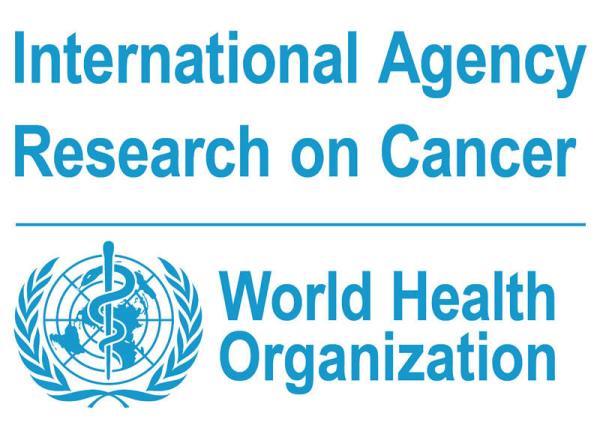
The International Agency for Research on Cancer (IARC) has a new leader, an Old Guard insider named Dr. Elisabete Weiderpass, who promised not to change the status quo, which means they remain stuck with an old problem; credibility.
While for its first 20 years they were a much-needed voice of reason that stood up to activists claiming that some new chemical of the month was a carcinogen because it could kill rats, for the last 10 IARC have been the source of ridicule among the science community. And that is because the environmentalists whose hype they once exposed played the long game and wormed their way inside.(1) Today, thanks to letting them hijack that science body, we are told to believe that a weedkiller can cause cancer and deli meat is as bad for you as plutonium or mustard gas. Such claims are literally baloney.
But media who love centralized authoritarian bodies and veils of anti-corporate credibility have gleefully reported each more cosmic claim from the French organization during that time. They have even touted media press releases distributed prior to actual reports as fact. Though IARC decisions do not consider risk (to determine a hazard they allow papers that show 5 orders of magnitude, so one dose of a compound is the same as 10,000 to them) the WHO group will mention risk dozens of times in media claims in their press releases.
There is just one problem they face: Every few years, a new crop of journalists enters the field, and not only might they not be in the bag for your brand of activism, they might be neutral and wonder why no one turns their gaze on the manipulations of supplement hucksters, alternative to medicine purveyors, and environmental lawyers. And some scientists who engage in public outreach are critical thinkers about studies everywhere, like molecular biologist Leonid Schneider and microbiologist Dr. Elisabeth Bik, who have called out groups who do this and also journal editors who enable them with a desire to publish provocative claims that will bring international media links.
A recent analysis of both journals and IARC involvement, titled WHO Cures Cancer In Photoshop, went into detail about the cultural flaws that allowed IARC to lose its way but more broadly about how easy it is to duplicate or reuse or slightly change graphics to look original in a science study. Some of the inferences I don't agree with - the involvement of a private sector scientist does not sway results by default, that is Cui bono? conspiracy signaling - but the overall examination is sound. (2)
Schneider is not alone in being concerned that IARC is trapped in the past using a methodology that is easily exploited by activists with nefarious agendas and patience, like Professor Martyn Smyth of Council for Education and Research on Toxics (CERT) (3) or Dr. Chris Portier of Environmental Defense Fund. They used 21st century strategy to infect a stodgy 20th century institution, which creates ad hoc working groups based on having friends inside, refuses to be transparent, and has no rules for the study of each compound. It has become just statisticians finding things to correlate to cancer. As Dr. Angela Logomasini of Competitive Enterprise Institute notes in the Washington Times, "The working groups are free to focus on myriad small-scale studies with implausible results. That can lead to cherry-picking that serves the biases of working group members."
It certainly has. Look at two California court cases, on coffee and on weedkiller, and the first thing you will find are two IARC participants mentioned above, Chris Portier and Martyn Smith, who have been paid by attorneys to help them sue companies.
Is there hope? There certainly is. The American Council on Science and Health Board of Scientific Advisors was part of a group of four people called on to testify before the U.S. House Science, Space, and Technology Committee about IARC and we recommended Congress use its financial leverage, and the credibility U.S. backing grants, to rein the rogue statistical body in.
The only opposition we faced on that panel was Natural Resources Defense Council's Dr. Jennifer Sass, who argued IARC's closed door mentality and lack of transparency about its working groups should remain untouched. That was the opposite of what she claimed in 2002 and when that was noted she could only reply, "2002 was a long time ago."
In many ways, this is true, and IARC should consider shucking off the parts of our past that no longer have validity in 2018.
NOTE:
(1) If your career goal is to get a fat paycheck as an expert witness or as a consultant at an environmental NGO, today there is a clear roadmap. First, write provocative epidemiology papers linking harmless things to health effects - it can be miracle vegetables creating eternal life or scary chemicals taking years away. Second, become a Washington insider and get a title, any title, from the National Institute of Environmental Health Sciences (NIEHS). If you are good with media and share the correct political proclivities, use that title to get quoted frequently in the New York Times. Soon enough, a litigation group like Earthjustice or Environmental Defense Fund or Center for Biological Diversity will start offering you money. And if you are really good at political maneuvering, you will get a slot on an IARC Working Group, where you can get the chemical you wanted banned all along subjected to a review. Once that is complete, you can claim to be a U.N. expert on the chemical you want banned while signaling to trial lawyers you are ready to "play ball", and then the expert witness checks will start coming in.
(2) "Apparently, by re-using certain western blot bands, a potential prevention therapy for cervical cancer can be established. Amazing research, done by WHO scientists at IARC, with public support."
He pulls no punches. You should read it.
Attention @PNASNews @jbiolchem @J_Immunol @ASMicrobiology @PLOSPathogens @JExpMed @ACasadevall1 Look what @IARCWHO published in your journals. https://t.co/PhM33CET8l
— Leonid Schneider (@schneiderleonid) October 11, 2018
(3) Despite its lofty name, CERT is not a council at all, there is no 300-person Board of Scientific Advisors like we have, it was instead created by Metzger Law group to have a non-profit to act as a front for lawsuits against companies - if it exists outside paper at all it now it seems to be "run" by a politically sympathetic history professor.



